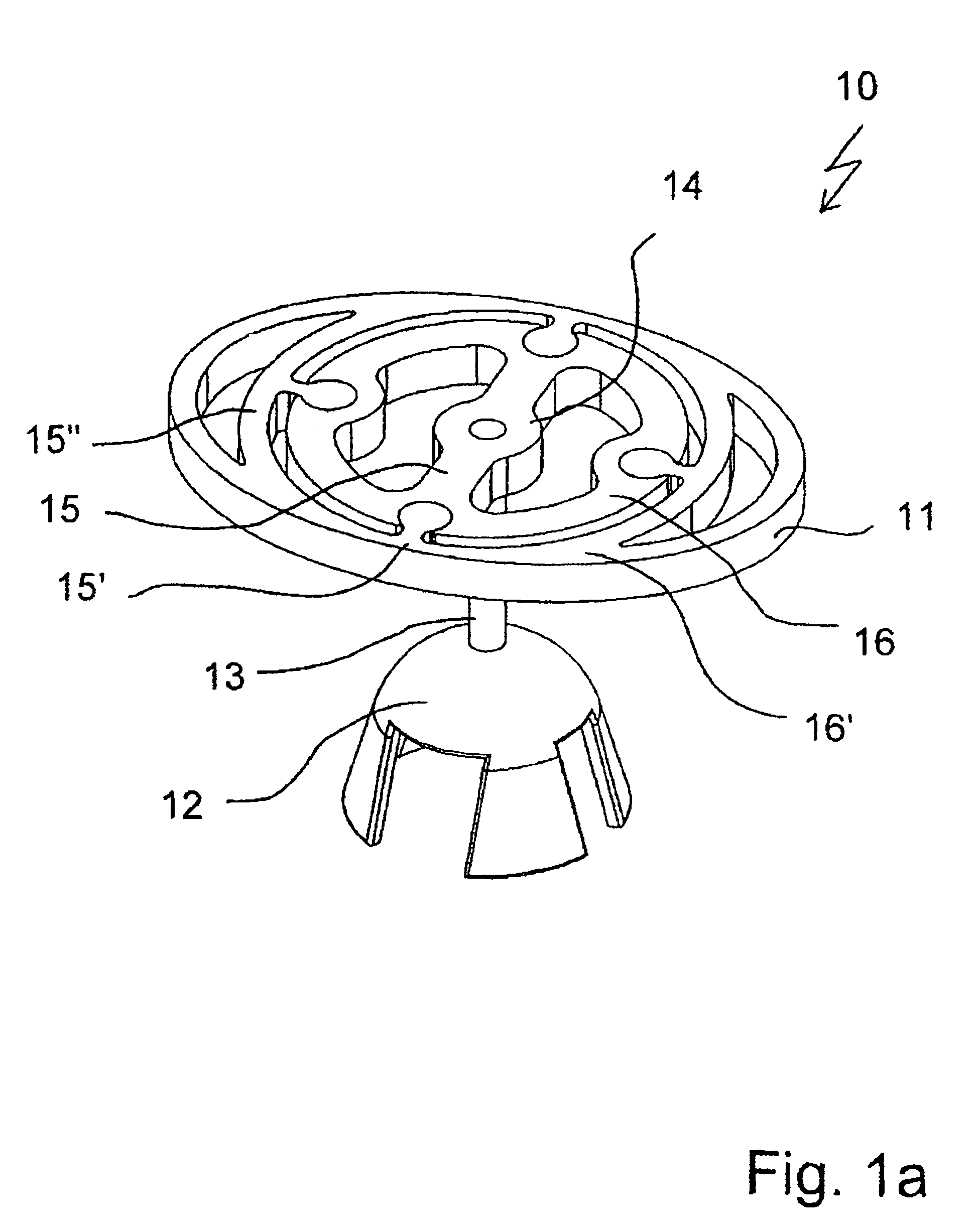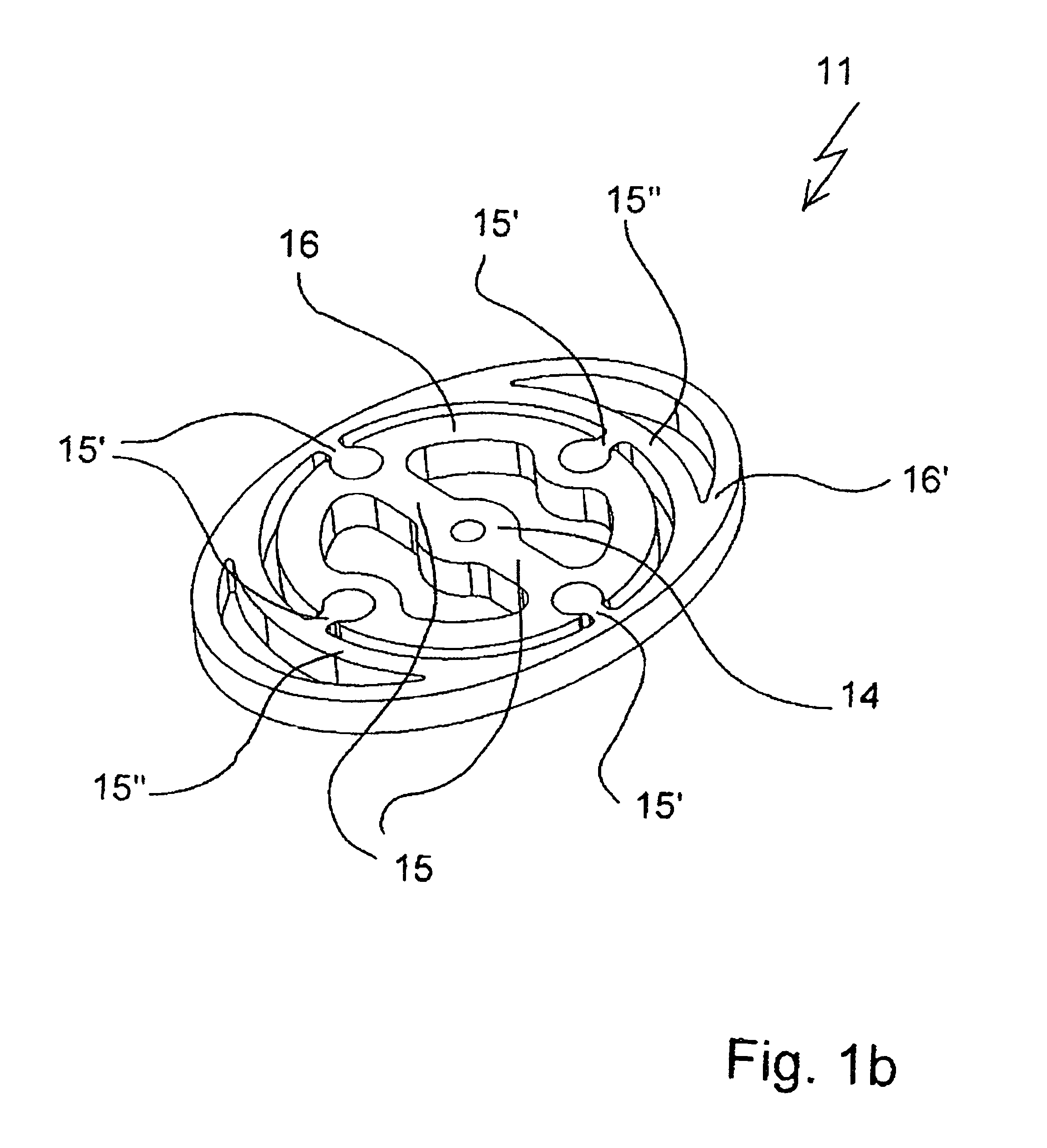Auditory ossicle prosthesis with variable coupling surfaces
a technology of ossicle prosthesis and coupling surface, which is applied in the field of ossicle prosthesis, can solve the problems of insufficient air, insufficient air, and the prosthesis shifting from its local position, and achieve the effect of optimal adaptation and minimal cos
- Summary
- Abstract
- Description
- Claims
- Application Information
AI Technical Summary
Benefits of technology
Problems solved by technology
Method used
Image
Examples
Embodiment Construction
[0075]The auditory ossicle prostheses 10; 20; 30; 40; 50; 60; 70; 80; 90 according to the invention each have, at one end, a plate-shaped first securing element 11; 21; 31; 41; 51; 61; 71; 81; 91 which is designed in the form of a headplate for bearing on the tympanic membrane or as a footplate for bearing on the footplate of the stirrup. At the other end of the auditory ossicle prostheses 10; 20; 30; 40; 50; 60; 70; 80; 90, there is a second securing element 12; 22; 32; 92 for mechanical connection of the prosthesis to a member or parts of a member of the ossicular chain or directly to the inner ear. Arranged between these is a connection element 13; 23; 93 which connects the two securing elements to each other so as to conduct sound and which, in the embodiments shown, is designed in the form of a one-part or multi-part, short or long shaft.
[0076]The plate-shaped first securing element 11; 21; 31; 41; 51; 61; 71; 81; 91 in each case has a radially inner coupling area 14; 24; 34; 4...
PUM
 Login to View More
Login to View More Abstract
Description
Claims
Application Information
 Login to View More
Login to View More - R&D
- Intellectual Property
- Life Sciences
- Materials
- Tech Scout
- Unparalleled Data Quality
- Higher Quality Content
- 60% Fewer Hallucinations
Browse by: Latest US Patents, China's latest patents, Technical Efficacy Thesaurus, Application Domain, Technology Topic, Popular Technical Reports.
© 2025 PatSnap. All rights reserved.Legal|Privacy policy|Modern Slavery Act Transparency Statement|Sitemap|About US| Contact US: help@patsnap.com



